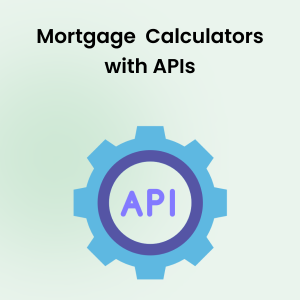Your cart is currently empty!
Customer Resolution Rate
Posted by:
|
On:
|
Customer Resolution Rate is a key customer service metric that measures the percentage of customer inquiries, issues, or complaints that are successfully resolved by a company within a given period. It reflects the effectiveness of support teams, communication channels, and internal processes in addressing customer needs. A high Customer Resolution Rate indicates that most customers receive satisfactory answers or solutions, leading to increased satisfaction, loyalty, and positive brand perception. Monitoring and optimizing this rate is essential for businesses aiming to improve customer relationships, enhance service quality, and maintain a competitive advantage.
Understanding Customer Resolution Rate
Customer Resolution Rate is calculated by dividing the number of inquiries or issues resolved by the total number of inquiries received within a specific timeframe, then multiplying by 100 to obtain a percentage:
Customer Resolution Rate (%) = (Number of Resolved Inquiries ÷ Total Inquiries Received) × 100
For example, if a company handles 1,000 customer inquiries in a month and successfully resolves 950 of them, the resolution rate would be:
(950 ÷ 1,000) × 100 = 95%
Why Customer Resolution Rate Matters
A high Customer Resolution Rate directly impacts customer satisfaction, as it ensures that most customers receive timely and effective solutions to their issues. Resolving inquiries efficiently can reduce churn, encourage repeat business, and generate positive word-of-mouth recommendations. Additionally, a strong resolution rate supports resource optimization, since well-structured processes reduce the need for prolonged interactions or repeated follow-ups. By understanding and improving this metric, companies can fine-tune their support strategies, enhance team performance, and better align with customer expectations.
Factors Influencing Customer Resolution Rate
Several factors can affect the ability of a company to resolve customer issues effectively:
- Agent Expertise and Training: Well-trained support staff can more efficiently diagnose problems and find solutions.
- Knowledge Base Quality: Comprehensive, up-to-date resources help agents quickly address common concerns.
- Communication Channels: Offering multiple channels (email, chat, phone, social media) and ensuring they are user-friendly improves accessibility and speed of resolution.
- Internal Collaboration: Seamless cooperation between departments ensures complex issues are escalated and resolved promptly.
- Technology and Automation: Advanced CRM systems, AI-powered chatbots, and ticketing tools streamline workflows and reduce handling times.
- Clear Policies and Procedures: Well-defined guidelines help agents make quick, consistent decisions that lead to successful resolutions.
Strategies to Improve Customer Resolution Rate
Consider the following approaches to boost your resolution rate and deliver better customer experiences:
- Invest in Agent Training: Provide comprehensive onboarding and ongoing training to ensure agents have the skills and knowledge to handle various issues.
- Maintain a Robust Knowledge Base: Keep product documentation and FAQs updated to help agents and customers find solutions quickly.
- Use Effective Support Tools: Implement CRM systems, ticketing platforms, and AI chatbots to automate tasks and simplify case management.
- Offer Multiple Support Channels: Allow customers to choose their preferred communication method for convenient and timely assistance.
- Streamline Internal Processes: Establish clear escalation paths and encourage cross-departmental collaboration to resolve complex cases faster.
- Set Clear Service-Level Agreements (SLAs): Define resolution time targets and hold teams accountable for meeting them.
- Monitor Performance and Feedback: Use surveys and analytics to identify improvement areas and track progress over time.
- Empower Agents: Give support staff the authority to offer refunds, replacements, or other remedies without lengthy approvals, speeding up resolutions.
- Analyze Common Issues: Identify trends in customer complaints and address underlying causes to reduce recurring problems.
Measuring Customer Resolution Rate
Accurate measurement is essential for evaluating performance and making informed decisions:
- Define Resolution Criteria: Clearly determine what counts as a “resolved” inquiry (e.g., customer confirms satisfaction or the issue is marked closed).
- Use CRM and Helpdesk Software: Implement tools that track all interactions, categorize issues, and log resolutions.
- Monitor Key Metrics: Track the total number of inquiries, resolved cases, unresolved cases, average resolution time, and customer satisfaction scores.
- Segment Data: Analyze resolution rates by product line, channel, or agent to identify specific strengths and weaknesses.
- Set Benchmarks and Goals: Establish target resolution rates based on industry standards and strive for continuous improvement.
Benchmark Indicators
The following table offers a general guideline for interpreting Customer Resolution Rates in different industries. Presenting the benchmarks in a visually appealing format helps readers quickly assess their performance and set realistic targets:
| Industry | Excellent | Average | Needs Improvement |
|---|---|---|---|
| E-commerce & Retail | Above 95% | 85% – 95% | Below 85% |
| Software & SaaS | Above 90% | 80% – 90% | Below 80% |
| Financial Services | Above 92% | 85% – 92% | Below 85% |
| Travel & Hospitality | Above 93% | 85% – 93% | Below 85% |
| Healthcare | Above 95% | 88% – 95% | Below 88% |
Common Pitfalls to Avoid
Be aware of these issues that can lower your Customer Resolution Rate:
- Delayed Responses: Slow reaction times to inquiries can cause customers to lose patience and escalate complaints.
- Insufficient Agent Training: Unprepared or undertrained agents may struggle to resolve issues effectively.
- Complex Escalation Paths: Overly complicated processes for escalating cases to higher-level support can delay resolutions.
- Inadequate Documentation: Lack of a robust knowledge base can hinder agents from quickly finding solutions.
- Ignoring User Feedback: Failing to act on feedback prevents continuous improvement in support quality.
- Limited Support Channels: Offering only one or two communication methods may reduce accessibility and timely resolution.
Conclusion
Customer Resolution Rate is a vital metric that reflects how efficiently and effectively your company addresses customer concerns. By understanding the factors influencing resolution rates and implementing strategies to improve agent training, documentation, communication channels, and escalation procedures, you can enhance customer satisfaction, reduce churn, and strengthen brand loyalty. Regularly monitoring this metric and benchmarking against industry standards is essential for identifying areas for improvement and ensuring your support operations consistently meet or exceed customer expectations.
Frequently Asked Questions
What is Customer Resolution Rate?
Customer Resolution Rate measures the percentage of customer inquiries or issues that are successfully resolved within a given period, reflecting the effectiveness of customer support operations.
Why is Customer Resolution Rate important?
It’s important because it affects customer satisfaction, loyalty, and brand perception. High resolution rates foster trust, encourage repeat business, and improve operational efficiency.
How can I improve my Customer Resolution Rate?
You can improve it by investing in agent training, maintaining a robust knowledge base, using effective support tools, offering multiple channels, streamlining escalation paths, setting clear SLAs, and monitoring performance metrics.
What factors affect Customer Resolution Rate?
Factors include agent expertise, quality of the knowledge base, available communication channels, internal collaboration, technology adoption, policies and procedures, and personalization of customer interactions.
How do I measure Customer Resolution Rate?
Measure it by defining resolution criteria, using CRM and helpdesk software to log and track inquiries, monitoring key metrics, segmenting data for deeper insights, and setting benchmarks and goals.



